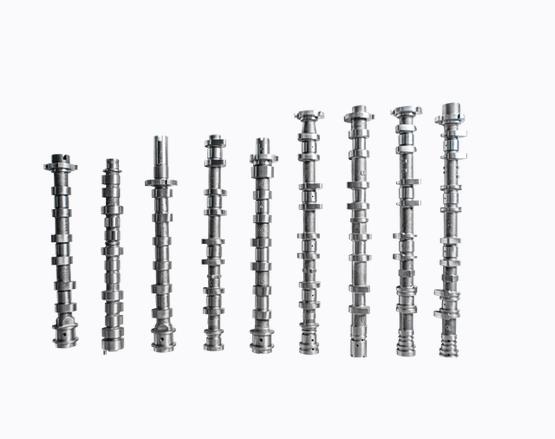A camshaft is a component in a piston engine. Its funct […]
A camshaft is a component in a piston engine. Its function is to control the opening and closing of the valve. Although the speed of the camshaft in a four-stroke engine is half of that of the crankshaft, it usually still has a high speed and needs to withstand a lot of torque. Therefore, the design requires high strength and support for the camshaft, and its material It is generally special cast iron, and occasionally forgings are used. See the figure below. According to the number of overhead camshafts, car engines are divided into overhead single camshafts and overhead double camshafts. When more than two valves are used in each cylinder, there are generally two types of valve arrangements: one is that the intake valve and the exhaust valve are mixed on one camshaft, that is, SOHC-Single Over Head Cam (SOHC-Single Over Head Cam) type engine. This type of engine has only one camshaft installed on the top, so there are generally only two to three valves per cylinder (one or two for intake and one for exhaust), and high-speed performance is limited. The other is that the intake valve and the exhaust valve are arranged on two camshafts. The DOHC (Double Over Head Cam, overhead double camshaft) engine is equipped with two camshafts, each cylinder can be Installing four to five valves (two to three for the intake and two for the exhaust), the high-speed performance has been significantly improved.
Classification
According to the form of blank, there are three types of chilled alloy cast iron, ductile iron and assembled type. See Table 1 for comparison. According to the processing technology, there are three types of core technology, coreless technology and assembly technology.
skills requirement
According to the characteristics of the camshaft, there are mainly the following technical requirements.
1). The dimensional accuracy of the bearing journals and the coaxiality between the bearing journals
2). Dimensional and positional accuracy of the keyway
3). The perpendicularity of the thrust surface relative to the bearing journal line
4) Dimensional accuracy of cam base circle and coaxiality relative to bearing journal axis
5). The positional accuracy of the cam
6). The shape accuracy of the cam (curve lift), etc.
Turning (grinding) thrust surface
The thrust surface is the reference for china Ductile iron camshaft blank the axial dimension on the camshaft. It is also the benchmark for cooperation with the cylinder head. Thrust face width is a key characteristic of camshafts.
General requirements: width tolerance 0.08, runout: 0.035
Generally, if the runout is lower than 0.035, the thrust surface should be ground, and if it is higher than 0.035, it can be replaced by turning. HARDINGE's lathes can meet the requirements of runout 0.02.
Grinding journal
The journal grinding of camshaft generally includes turning, rough grinding and fine grinding. The centerless process is only divided into coarse grinding and fine grinding.
Equipment requirements: high-precision CNC cylindrical grinder. Recommended manufacturers Japan ToYoda, Japan KOYO, Germany Junker, Germany Mikorsa, Germany Schaudt, UK
Technical requirements: diameter tolerance 0.021, runout 0.04, roundness 0.005, Ra0.4
Process: The width of the grinding wheel is larger than the width of the journal, and the grinding wheel only feeds in the radial direction, and does not move in the axial direction.
Centered process: the center hole is positioned, and each journal is ground in sequence.
Centerless process: self-positioning of journals, all journals are ground at one time.
Measurement: Generally, grinding journals requires an online measuring system to measure 100% of the diameter, runout and roundness of the journals.
Zhejiang Junrong Auto Parts Co., Ltd.